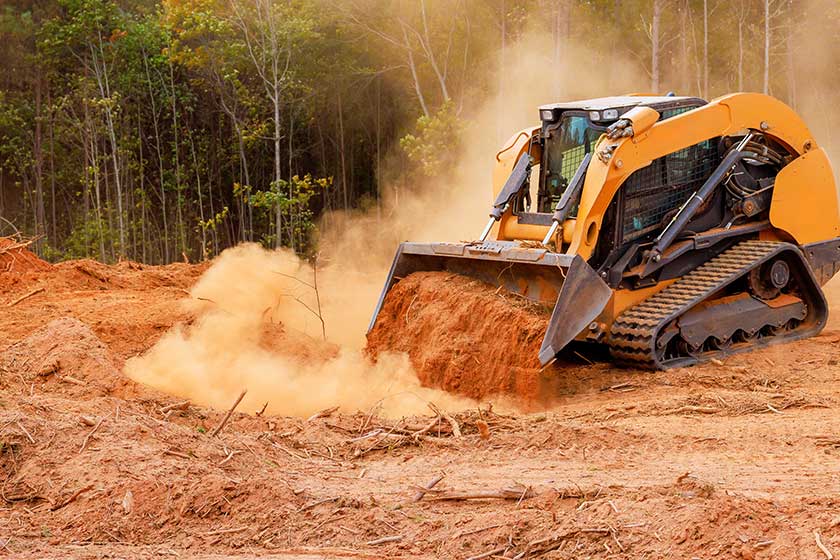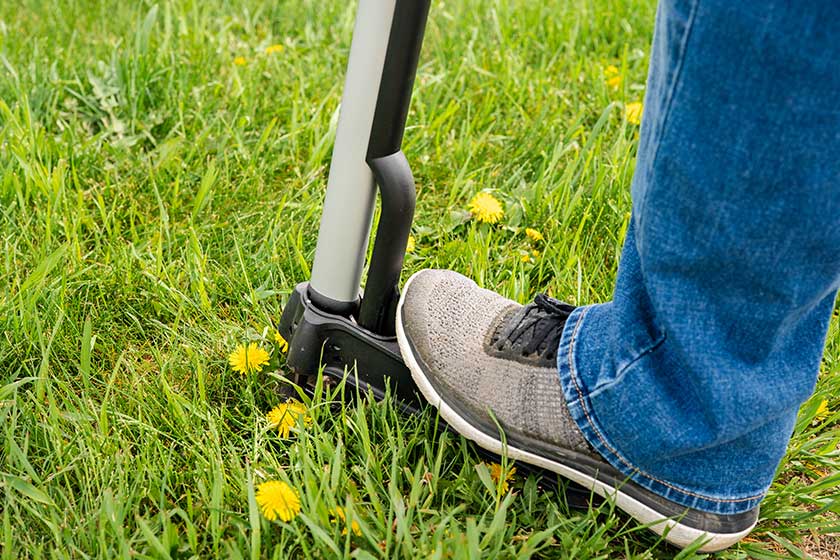Land grading is a fundamental part of any landscaping or construction project. Whether you are leveling land for a patio or driveway, or addressing drainage issues, knowing the land grading prices will help you budget effectively. The cost of land grading varies depending on several factors, such as the size of your property, the type of grading required, and the complexity of the job.
In this guide, we will explain the details of land grading prices, how they are calculated, and what factors contribute to the overall cost of the project. If you are considering grading your land, it is important to understand what goes into pricing to make informed decisions.
What Is Land Grading?
Land grading is the process of reshaping the land to make it level or to create the proper slope for water runoff. It improves the aesthetics of the land and is essential for building a foundation for structures such as patios, driveways, or even new homes. Grading is also necessary for resolving drainage problems, preventing soil erosion, and preparing land for landscaping projects.
Proper land grading can make a huge difference in the safety and long-term health of your property. For instance, poorly graded land can cause water to pool around structures, leading to damage over time. On the other hand, well-executed grading ensures that water drains properly and that your property remains stable.
How Land Grading Prices Are Determined
Several factors influence the price of land grading. These factors include the size of the area being graded, the slope of the land, the amount of soil to be moved, and the type of grading equipment required. Here are the key components that impact land grading prices:
Property Size
The larger the area you need to grade, the more expensive the project will be. Land grading is often priced per square foot or per acre, with larger areas requiring more labor and equipment. For small residential projects, such as leveling a yard for a new patio, grading may only involve a few hundred square feet. However, larger projects like preparing a site for new construction can involve grading acres of land.
Slope and Terrain
The steeper the land, the more complex the grading process will be. Grading on flat land is relatively simple and less expensive, but grading on a hillside or uneven terrain can be challenging. A slope may require more excavation, moving dirt to fill low areas, and using specialized equipment, all of which increase the overall cost.
In some cases, grading may require cutting into the land to remove high spots and adding fill dirt to level out low spots. This process, known as “cut and fill,” can increase the price, especially if the land has rocky or difficult-to-work-with soil.
Type of Grading
Different types of grading will affect the price. Fine grading involves smoothing and leveling the topsoil to create a level surface, while rough grading is more complex and includes shaping the land for drainage or other specific needs.
- Fine Grading: This involves leveling the top 1 to 3 inches of the soil to prepare the land for landscaping or seeding. The price for fine grading is generally lower because it requires less excavation and equipment.
- Rough Grading: This type of grading involves more intensive excavation, shaping the land, and adding or removing dirt to address drainage issues, create slopes, or level out areas for larger projects. Rough grading is more expensive because it requires additional labor and equipment.
Soil and Fill Material
The type of soil on your property can also influence the cost of grading. Hard, compacted soil or rocky terrain requires more effort to excavate and may need additional fill material. Fill dirt is often used to level areas, and it is priced per cubic yard. If your project requires significant fill material, this can drive up the overall cost.
Additionally, if some trees or stumps need to be removed, the cost will increase. The land must be cleared before grading can begin, which requires extra labor and equipment.
Equipment and Labor
Land grading is typically performed using heavy equipment, such as bulldozers, backhoes, skid steer loaders, and excavators. The type of equipment required and the number of hours needed to complete the job will impact the price. Hiring professional operators to use this equipment also adds to the cost.
For smaller jobs, such as leveling a yard for a new garden or patio, you may be able to rent basic tools, such as a landscape rake or shovel. However, for larger or more complicated grading projects, hiring a professional with the proper equipment is highly recommended. Professional operators have the expertise to complete the job efficiently and without damaging your property.
Disposal of Waste and Debris
During grading, waste and debris typically need to be removed from the site. This can include rocks, stumps, branches, or other materials that may be in the way. The cost to remove and dispose of this debris is often included in the grading price, but it may be an additional charge in some cases.
The more debris there is to clear, the higher the overall cost will be. If the site is heavily wooded or has significant waste to remove, the disposal costs can add up quickly.
Land Grading Cost Breakdown
Now that we understand the factors that influence land grading prices, let’s take a look at the typical costs you can expect based on your project size.
Small Residential Projects
For smaller projects, such as leveling a yard for a new patio, driveway, or landscaping, the cost of land grading typically ranges between $770 and $3,000 for areas between 1,000 and 2,000 square feet. The national average for such projects is around $1,700.
Grading for a small patio may cost between $310 and $1,000. If the land is mostly flat, with little need for excavation or fill dirt, the cost will be on the lower end. However, if the project involves creating slopes for drainage or other features, the cost may reach the higher end of the range.
Larger Residential Projects
For larger projects, such as preparing the land for a swimming pool or adding a concrete driveway, you can expect to pay significantly more. For instance, grading for a pool can cost anywhere from $200 to $850, while grading for a new driveway can range from $1,000 to $5,125.
If you are leveling land for the foundation of a new home, the cost can reach between $1,000 and $6,700. For complex projects, such as regrading around the foundation for drainage issues or leveling a steep slope, the cost can exceed $3,000.
Large Acreage Projects
If you are grading land on a larger scale, such as for new construction or to address large-scale drainage issues, the cost can range from $15,800 to $44,535 per acre. The cost for smaller areas within an acre, such as ¼ acres or ½ acres, will range from $3,950 to $22,268.
Larger projects like this may require specialized equipment, additional fill dirt, and more extensive labor, all of which contribute to the higher price.
Additional Costs That Can Affect Land Grading Prices
Several other factors can impact the overall cost of land grading. Understanding these factors will help you better prepare for the total expense and avoid surprises during the project.
Land Clearing Costs
Before grading can begin, the land often needs to be cleared of trees, shrubs, stumps, or any structures that may be in the way. The cost to clear land varies significantly based on the size and complexity of the job. For example:
- Tree Removal: The cost to remove a single tree can range from $385 to $1,070, depending on its size and location.
- Stump Removal: Stump removal is typically priced between $120 and $350 per stump.
- Debris Removal: Depending on the amount of debris, removing construction waste, such as old buildings or other obstacles, can cost anywhere from $125 to $2,775.
Land clearing is often a necessary step before grading, and these additional costs can quickly add up, especially if your property has trees or structures that need to be demolished.
Permits and Surveys
In some cases, you may need permits before grading your land, especially if you plan to disturb more than 5,000 square feet of land. Permit fees can range from $150 to $485, depending on your location. Some areas may require more complex permits if you are working on slopes or near protected land.
In addition to permits, you may need a land survey to determine the exact topography of your land. Surveys typically cost between $500 and $1,200. This cost is essential if your land has complicated slopes or if you need to understand the precise layout before proceeding with grading.
Erosion Control and Drainage Systems
Grading can expose your property to soil erosion, especially after reshaping the land. To prevent soil runoff and further damage, you may need to install erosion control systems such as retaining walls or erosion grids. Prices for these tree services vary depending on the materials and complexity of installation:
- Retaining Walls: Costs typically range from $40 to $345 per linear foot.
- Erosion Grids: The average cost is $0.65 to $1.60 per square foot.
- Sod Installation: Costs for installing sod range from $0.90 to $1.80 per square foot.
- Hydroseeding: This method for seeding grass costs between $0.05 and $0.20 per square foot.
Erosion control and drainage systems are important for preventing water damage to your newly graded property. This step may add to the cost, but it will protect your investment in the long term.
Equipment Rental and Operator Fees
If you plan on tackling the land grading project yourself, you may choose to rent equipment. However, rental costs can add up quickly, especially for larger equipment such as bulldozers or excavators. Here are the average rental costs for grading equipment:
- Bulldozer: $410 to $620 per day, or $910 to $2,035 per week.
- Excavator: $240 to $470 per day, or $850 to $1,480 per week.
- Backhoe: $185 to $500 per day, or $615 to $1,600 per week.
- Skid Steer Loader: $240 to $340 per day, or $780 to $1,060 per week.
- Dump Truck: $250 to $550 per day, or $815 to $1,400 per week.
For larger projects, hiring a professional operator is usually more efficient and cost-effective. The cost to hire a grading contractor often includes the use of these machines and operator fees.
Drainage Installation
Sometimes, grading alone is not enough to manage water flow across your property. If your property requires additional drainage systems, such as French drains or dry wells, the cost can range significantly:
- French Drains: Typically cost between $10 and $75 per linear foot.
- Dry Wells: Installation costs range from $1,350 to $4,255.
A well-designed drainage system is vital for preventing water from pooling around structures and maintaining the health of your landscape. While this is an additional cost, it is a worthwhile investment in protecting your property.
Seasonal Considerations
The time of year can also affect land grading prices. Grading projects during peak seasons, such as spring and summer, may come with higher rates due to increased demand for contractors. Additionally, the weather can play a role in the scheduling and execution of the project:
- Spring and Summer: These seasons are ideal for grading since the ground is easier to work with when it is not frozen. However, high demand during these months can lead to higher prices.
- Fall and Winter: Grading during these seasons may be more affordable, but the weather can make the process more difficult. Frozen ground or heavy rain can delay work or require special equipment.
Plan your grading project according to the season that best suits your budget and timeline.
Get Expert Land Grading Help from Covenant Landscapes
At Covenant Landscapes, we specialize in land grading and full lawn maintenance services to help you create the perfect landscape. Whether you need grading to address drainage issues, prepare land for construction, or simply level your yard, our team is ready to assist. With years of experience and the right equipment, we guarantee efficient and high-quality land grading services. Let us help you transform your outdoor space and protect your investment.



